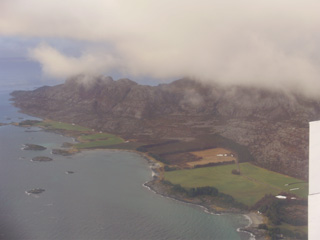
Exploration geophysics is used as a means of uncovering quality data regarding the mineral consistency within certain areas of the Earth's crust. The information gathered during an exploration aids in the production of geophysical maps, which are utilized by mining companies as part of the prospecting stage for mineral exploration.
The process of exploration geophysics commonly employs the use of airborne surveys as it is possible to survey large areas of terrain in one expedition.
There are a variety of different airborne surveys that can be used, each with its own specific purpose. Airborne magnetic surveys are used as a means of detecting valuable magnetic minable ores. Radiometric and Electromagnetic surveys detect the presence of minerals that may be hidden under bedrock or located in other regions that are covered with substances such as clay, which may block magnetic fields.
Airborne magnetic surveys are the most common of all the airborne exploration geophysics surveys, as they can be used for a variety of different purposes. The variances in traverse line spacing will render useful data at both high and low resolution.
These varying degrees of traverse line spacing put airborne magnetic surveys into two different categories: regional and detailed.
A regional airborne magnetic survey has a traverse line spacing of up to or more than 500 meters. It will cover an area of up to 5000 square kilometers. Regional magnetic surveys are most commonly used to aid in geological mapping. They are also a way of sourcing out sought after commodities such as coal and petroleum and other non-metallic resources.
The majority of mining companies use detailed surveys that have a higher data resolution than regional surveys, as the traverse line spacing is less than 500 meters. A detailed airborne magnetic survey can be the first step in a profitable mineral exploration as it renders data regarding the presence of magnetic minable ores such as kimberlites and magnetic iron ore.
Other uses of a detailed airborne magnetic survey are the locating of basement targets leading to exploration for hydrocarbon, determining minerals as either metallic or non-metallic and aiding in developing a comprehensive sense of the body of the land.
Because the data acquired during an airborne magnetic survey can potentially lead to an extensive mineral exploration, it is of upmost importance that the data acquired is as accurate as possible.
Mineral explorations that have commenced under the pretenses of faulty data acquired during a geophysical exploration have lead to major financial loss. Therefore, most junior mining companies source out companies that specialize specifically in conducting geophysical surveys, who are able to consistently acquire quality data using sophisticated data acquisition systems and in-house interpretation applications.
Exploration geophysics is a highly recognized field in terms of mineral prospecting, mapping and acquiring a comprehensive understanding of the geoscience of specific terrain. Relied upon by governments, scientists and the mining industry, the quality and accuracy of data attained is of upmost importance.